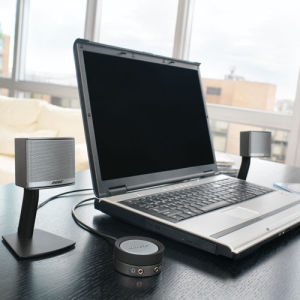 In a previous blog, I outlined some steps to take in order to optimize you web-based video conference (Click here for previous article). Since then, I thought it best to add a few more so all your bases are covered.
In a previous blog, I outlined some steps to take in order to optimize you web-based video conference (Click here for previous article). Since then, I thought it best to add a few more so all your bases are covered.
6.) Make sure your laptop has anti-virus software. The other day while conducting a test, I saw a little notification pop up reminding me to check my anti-virus software. This isn’t like ignoring an oil change or an overdue library book. No, this is serious! Without the proper anti-virus protection, well, in a word – VIRUSES! Yeah, probably not a good idea to conduct a deposition with privileged information being exchanged when the possibility of cyber hackers exist.
7.) Use external speakers. Laptops come in all shapes and sizes and so do the specifications. One might have a superior camera but limited gain when it comes to volume. Pick up a set of desktop speakers in case you have a soft-spoken speaker or in case the acoustics of the room interfere with the sound.
8.) Disable face-tracking on your webcam. The face tracking does what the title implies, tracks your face. That means every time you move, it will follow your face wherever it goes. So if you’re conducting a deposition and you keep looking down at your notes, the camera will follow your face as you look down. This can make the other participant frustrated and even dizzy with all the movement.
9.) Check your Power Save settings. In order to save power consumption and avoid screen burnout, most computers will either go dark or go into Screen Saver mode. This is common when there is no activity for a predetermined time. Unfortunately, only having a browser window open doesn’t count as activity. In order to avoid having your screen go dark or show pictures of your family vacation while conducting a deposition, consult with your IT professional about changing your Power Save settings during your session.
About the Author: Mike Tisa is the Director of Litigation Technology for Aptus Court Reporting. He is a Certified Legal Video Specialist and a Trial Presentation Professional through the National Court Reporters Association. Mike has been in the legal field since 2007 and is continuously researching advancements in the legal technology industry. For more on Mike’s background, visit his LinkedIn profile. http://www.linkedin.com/in/miketisa/



